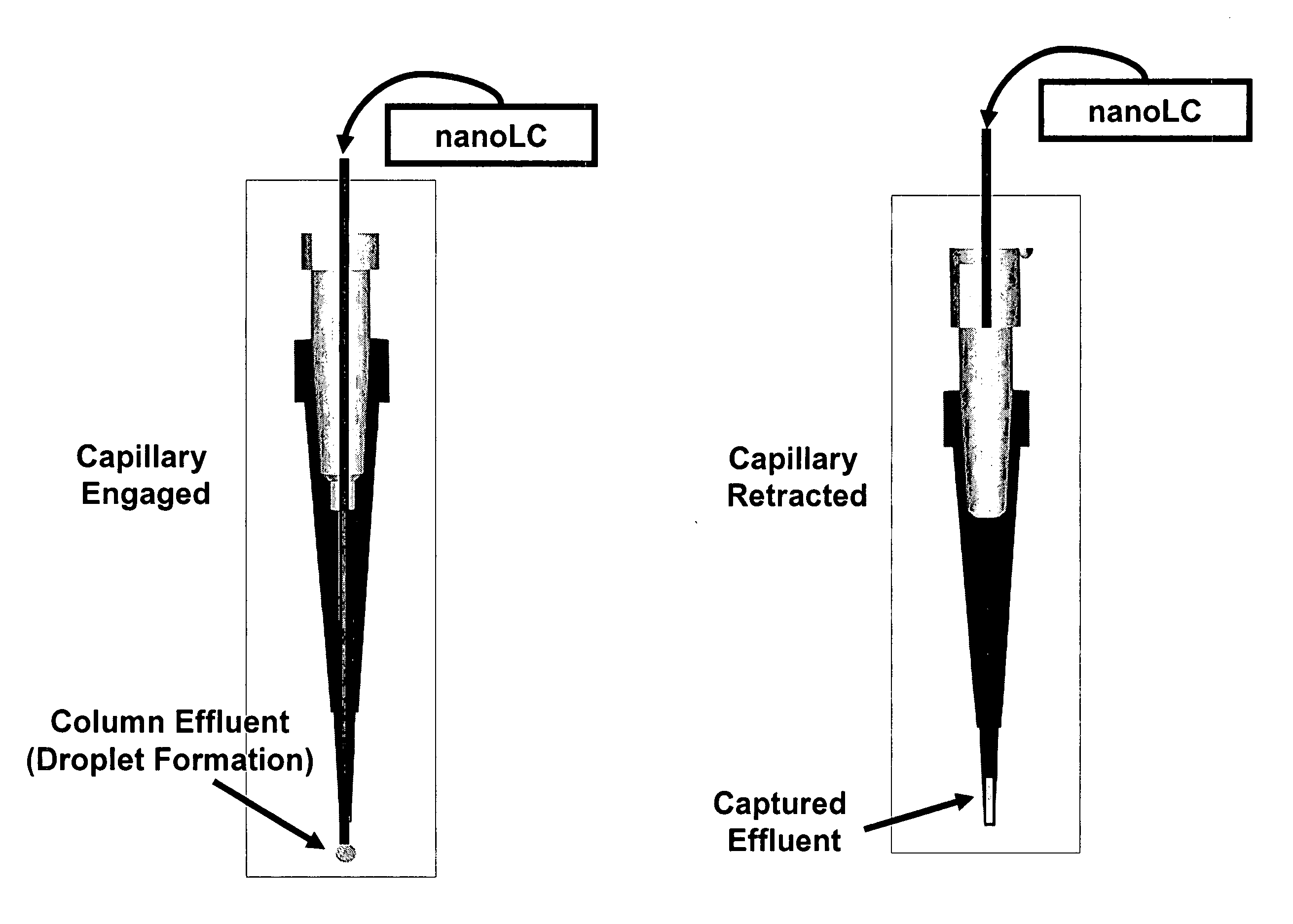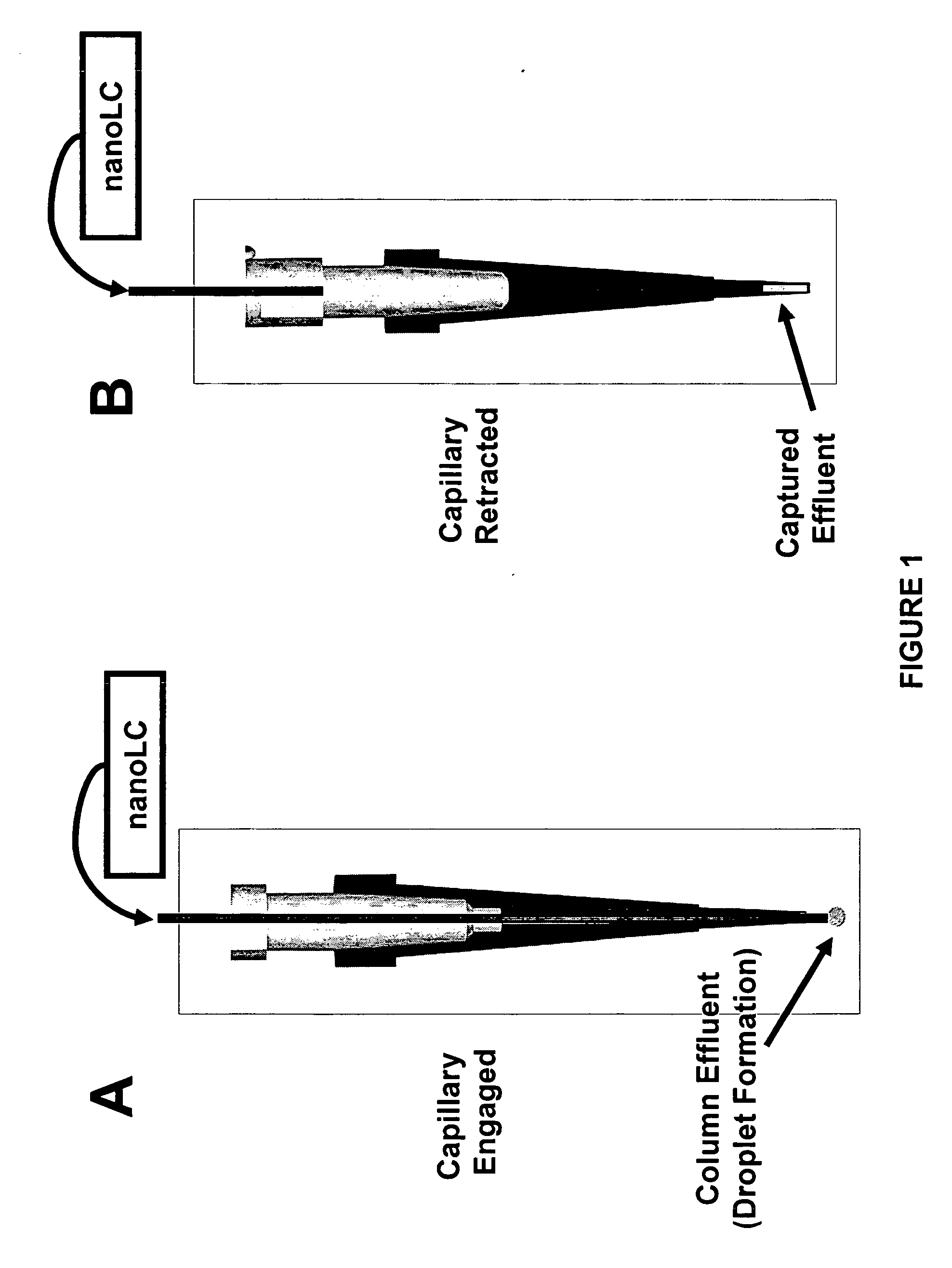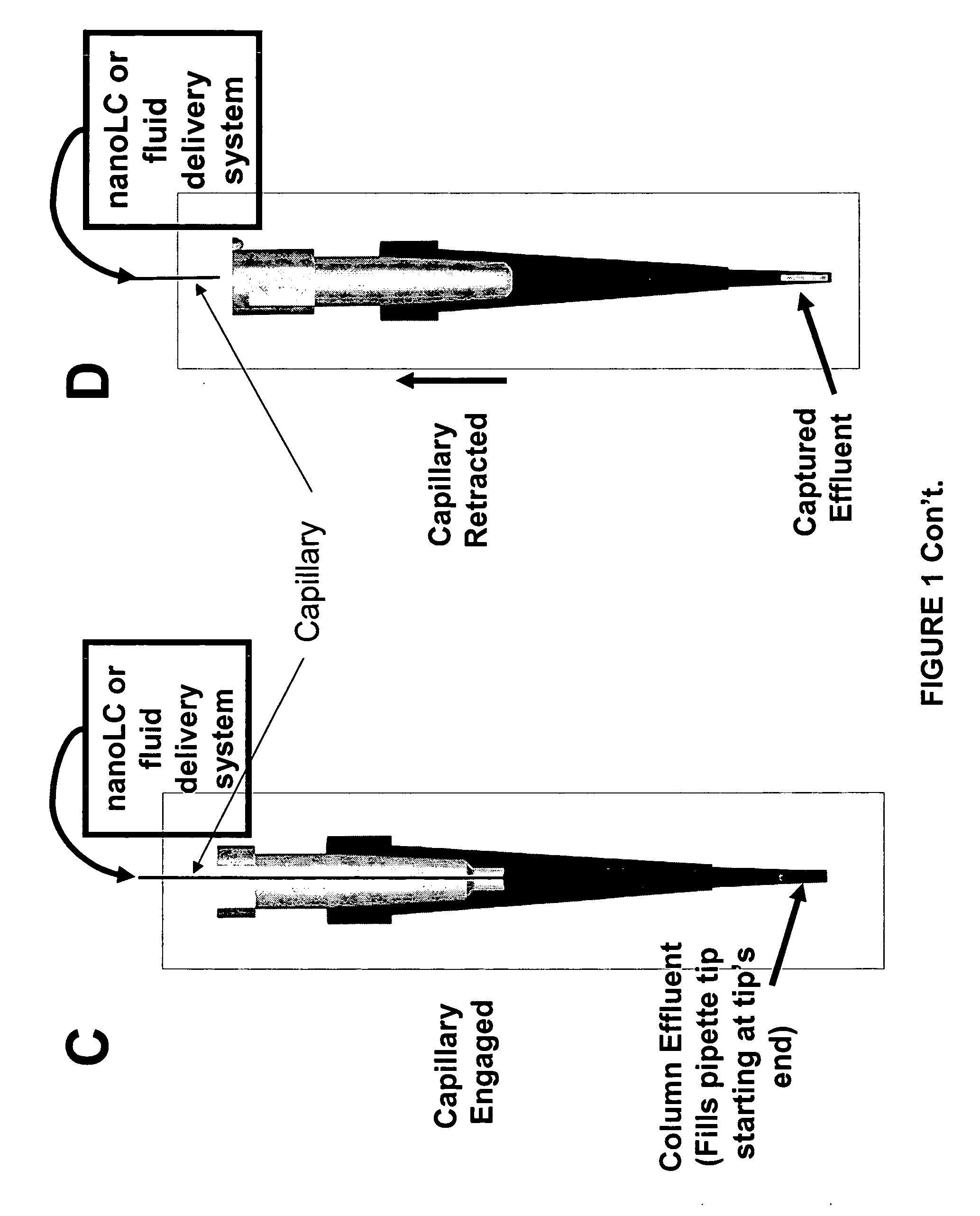Ultra-low volume fraction collection and analysis
a technology collection method, applied in the field of ultra-low volume fraction collection and analysis, can solve the problems of wide dynamic range, large volume of proteomic samples, and inability to combine two techniques without some compromis
- Summary
- Abstract
- Description
- Claims
- Application Information
AI Technical Summary
Benefits of technology
Problems solved by technology
Method used
Image
Examples
example 1
Sample Preparation
[0082] Fetuin and RNase B were each dissolved in a separate denaturing solution containing 6.0 M guandidine-HCl, 10 mM dithiothreitol, and 50 mM Tris pH 8.0 at 10 mg / mL. The two solutions were incubated at 50° C. for 45 min. Then iodoacetamide was added to each denatured protein solution at a final concentration of 25 mM. After sitting at room temperature for 45 min. in darkness, the two solutions were each diluted 1:10 in 50 mM ammonium bicarbonate pH 7.8, to form solutions containing 1 mg / mL of denatured protein. Trypsin was then added to each solution at an enzyme-to-substrate ratio of 1:50 (w / w). Digestions were performed at 37° C. for 16 hours and stopped by the addition of 0.1% (v / v) acetic acid. The two individual digests were stored at −20° C.
example 2
NanoLC Separation
[0083] For the nanoLC analysis of the fetuin digest prepared in Example 1, an UltiMate 3000 nanoLC system from Dionex (Sunnyvale, Calif.) and a C18 PepMap 100 (75 μm×15 cm, 3 μm, 100 Å) also from LC Packings (Sunnyvale, Calif.) were used. Mobile phase A was water with 0.2% formic acid, and mobile phase B was 80% acetonitrile in water with 0.2% formic acid. The gradient included a 10 minute desalt step with 0% mobile phase B, then from 10 to 45 minutes, mobile phase B was increased from 0% to 50%. After a 5 minute 100% mobile phase B column wash, mobile phase B was reduced to 0%, and the column was allowed to equilibrate for 45 minutes prior to another injection. The flow rate from the column was 280 nL / min, and the column oven temperature was maintained at 30° C. A 1 μL full loop injection, injecting a total of 1 pmol of fetuin tryptic digest prepared in Example 1 on-column was performed.
[0084] Both conventional on-line and nanoFACT fraction collection experiments...
example 3
NanoFACT Fraction Collection
[0087] NanoLC fraction collection into pipette tips for both the fetuin and RNase B samples separated in Example 2, was performed using a NanoMate. For the fetuin sample, nanoLC fractions were collected every 60 sec for a fraction volume of 280 nL, disregarding evaporative losses during the collection. For the RNase B sample, nanoLC fractions were collected into pipette tips every 90 seconds, for a total collection volume of 375 nL, again with the evaporation losses of the fraction during the collection disregarded.
PUM
 Login to View More
Login to View More Abstract
Description
Claims
Application Information
 Login to View More
Login to View More - Generate Ideas
- Intellectual Property
- Life Sciences
- Materials
- Tech Scout
- Unparalleled Data Quality
- Higher Quality Content
- 60% Fewer Hallucinations
Browse by: Latest US Patents, China's latest patents, Technical Efficacy Thesaurus, Application Domain, Technology Topic, Popular Technical Reports.
© 2025 PatSnap. All rights reserved.Legal|Privacy policy|Modern Slavery Act Transparency Statement|Sitemap|About US| Contact US: help@patsnap.com



